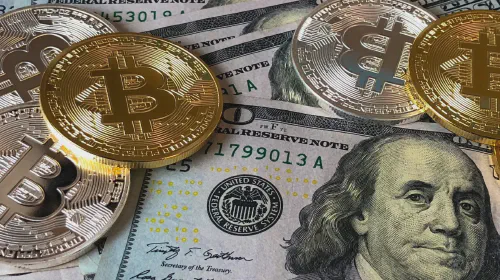What Is XRP and Who Uses It?
Salomon Kisters
Aug 15, 2022This post may contain affiliate links. If you use these links to buy something we may earn a commission. Thanks!
Not many cryptocurrencies have spent as many years on the top ten list of the largest crypto projects as XRP. It even surpassed ETH as the second largest cryptocurrency by market cap briefly in 2017 and 2018.
However, the project is a part of many controversies, leading investors to confusion.
This article will cover everything you need to know about XRP and who uses it.
What is XRP?
Before we get into the details, it is crucial to clarify the difference between Ripple, XRP, and RippleNet, as investors usually mistake them for the same. Ripple is a for-profit company that owns RippleNet and XRP.
RippleNet is a decentralized finance ecosystem with several digital payments and financial service providers using Ripple’s distributed ledger technology. Finally, XRP is the native coin of the network and is used by providers or enterprises that are part of the ecosystem.
Like many early crypto projects, XRP was created to replace Bitcoin – the first and the largest cryptocurrency in the world. The project’s primary purpose is to provide an alternative method to migrate transactions from databases owned by centralized financial institutions to a more open, cheaper, and quicker infrastructure. To be even more specific, its main target is cross-border transactions, which are really slow and expensive to execute in our traditional financial structure.
Launched in 2012, XRP is one of the industry’s pioneering cryptocurrencies. Inspired by Bitcoin, it also uses a public ledger, named XRP Ledger, to process transactions and events on the network.
However, the procedure to validate and record them on the blockchain is entirely different. XRP does not rely on the Proof-of-Work mechanism and mining to achieve consensus. Instead, it uses the Federated Byzantine Agreement (FBA) model.
Moreover, unlike Bitcoin, where anyone can become a network participant, only a set of trusted nodes are eligible to become validators. There are 150 special nodes collectively known as Unique Node List (UNL).
XRP is also used as an investment asset by crypto enthusiasts. You can find the cryptocurrency listed on multiple crypto exchanges, such as Binance, Kraken, FTX, Bitstamp, and Bitfinex, where you can easily trade it against fiat and other crypto tokens. Some platforms, like Nexo and YouHolder, even offer XRP saving accounts, allowing you to earn interest on your XRP holdings.
Who Created XRP? A Brief History
Interestingly enough, the idea behind Ripple and XRP is even older than the cryptocurrency industry itself. In 2004, a Canadian computer programmer, Ryan Fugger, launched RipplePay. It was a peer-to-peer financial network for the online community to transfer money around the globe.
The idea behind the technology was to eliminate the need for banks to proceed with P2P transactions. RipplePay achieved this by capitalizing on the relationship between different network participants. Simply put, if participant A trusts participant B, then B can act as a third party to validate transactions whenever A wants to transfer funds to any participant trusted by B.
Jed McCaleb – founder of Mt. Gox exchange and an early Bitcoin pioneer – observed that Bitcoin, although innovative and effective, was over-dependent on mining. He believed it was an expensive and unsustainable method to achieve consensus and would eventually undermine Bitcoin’s usability. In 2011, McCaleb approached Fugger to build a blockchain infrastructure and transform RipplePay into a cryptocurrency network.
In 2012, Fugger officially handed over RipplePay to McCaleb and Chris Larsen (who still serves as Ripple’s executive chairperson). They launched XRP cryptocurrency and OpenCoin – the first iteration of Ripple. The founding team also included Arthur Britto (who contributed to the development of the XRP Ledger), David Schwartz (co-authored the original Ripple whitepaper), and Stefan Thomas (who served as former Ripple Chief Technology Officer).
OpenCoin rebranded to Ripple Labs in 2013 before finally settling with the name Ripple in 2015. Similarly, before becoming XRP Ledger, the underlying decentralized ledger technology was initially called the Ripple Open Payments System and then changed to the Ripple Consensus Ledger.
Meanwhile, the company also underwent several cultural and systemic changes. Ripple, which originally started as a digital peer-to-peer transaction platform, began integrating some concepts and practices from the traditional financial system. The team realized they could win users’ trust by partnering with reputable businesses. These businesses are what Ripple would later call Ripple Gateways. And this new hybrid architecture that combines a peer-to-peer network with traditional banking structures is called the Ripple Gateway system.
The systemic shift proved to be of great significance in the company’s history. Since this hybrid model was a less unfamiliar pathway to enter the cryptocurrency sectors, the company became significantly popular among traditional financial institutions. Moreover, it allowed the platform to secure many high-profile partnerships, contributing massively to the RippleNet ecosystem.
Who Uses XRP?
The company has combined all of Ripple’s products into the RippleNet offering to boost its use cases. It enables connecting with hundreds of financial institutions worldwide through a single API. As a result, moving money across borders becomes fast, cheap, and reliable.
The biggest name in the list of Ripple’s partnerships is a US-based remittance company, Moneygram International Inc. The financial service company used Ripple’s products for its cross-border transactions before their partnership ended in March 2021.
Moreover, RippleNet also eliminates the need to pre-fund accounts. It is done by using XRP to provide liquidity during cross-border transactions. This service is called On-Demand Liquidity and is used by multinational corporations like Bank of America, Santander, American Express, SBI Remit, and Banco Rendimento.
Banks and financial service institutions can also benefit from the Ripple’s products without using XRP. Ripple also provides the Interledger Protocol, which allows the transfer of funds between cryptocurrency ecosystems and bank ledgers. The Interledger Protocol is connected with the XRP Ledger.
On top of all that, Ripple also funds RippleX. Using this product, developers and businesses can integrate blockchain technology into their enterprise model. It provides them with all the necessary tools and services to build their infrastructure on top of the XRP Ledger.
In short, Ripple-powered solutions encourage institutions to become part of the RippleNet ecosystem, allowing them to process transactions in real-time with increased efficiency and reliability at an incredibly low cost.
XRP Tokenomics
At the initial launch of the cryptocurrency, 100 billion XRP tokens were created, and the amount has been the same ever since then. That’s why XRP is known as a pre-mined cryptocurrency. However, the maximum token supply was not released into the market all at once. Instead, only a small amount is available to trade on the exchanges freely.
The underlying distributed ledger has 55 smart contracts of 1 billion XRP tokens. These smart contracts are designed to release 1 billion tokens into the market every month for 55 consecutive months. As a result, the circulating supply increases by 1 billion every month. The current circulating supply is around 48.34 billion tokens, while the rest of the tokens are held in escrow.
However, the investors must note that just the top 100 wallets hold more than 60% of the supply, which raises decentralization concerns about the cryptocurrency. Moreover, the Ripple company holds an additional 6.5 billion XRP, making the actual circulating supply around 42 billion tokens.
XRP is also a deflationary cryptocurrency, as the total supply reduces with time.
Though the project was released with 100 billion pre-mined tokens, as of August 2022, the total supply has come down to 99,989,535,142 XRP. That’s because the small fee incurred with each transaction is destroyed once the transfer is completed. So, after ten years of being released, about 11 million tokens have been burned as transaction fees.
Ripple Lawsuit with SEC
Ripple has been involved in some lawsuits and controversies over the years, raising concerns among the XRP community and potential investors. However, the most shocking was when the SEC charged the company and two of its executives on December 22, 2020 for raising around $1.3 billion through an unregistered security offering.
However, Ripple continues to counter these charges and is not intent on settling with the SEC. The company believes that the commission is unfair and biased, as it does not seem to have any problems with Ethereum or other crypto platforms. Moreover, Ripple also claims that its initial funding did not come from XRP sales but venture capital.
Future for XRP
XRP is one of the oldest cryptocurrencies with solid fundamentals and a dedicated community around the project. The fact that RippleNet facilitates so many high-profile financial institutions clearly reflects its popularity as a payment method.
However, over the past few years, the company has weathered some legal controversies that have acted as a barrier to price action. The future of XRP is highly dependent on the outcome of the company’s ongoing legal battle with the SEC.
Stay informed with the latest insights in Crypto, Blockchain, and Cyber-Security! Subscribe to our newsletter now to receive exclusive updates, expert analyses, and current developments directly to your inbox. Don't miss the opportunity to expand your knowledge and stay up-to-date.
Love what you're reading? Subscribe for top stories in Crypto, Blockchain, and Cyber-Security. Stay informed with exclusive updates.
Please note that the Content may have been generated with the Help of AI. The editorial content of OriginStamp AG does not constitute a recommendation for investment or purchase advice. In principle, an investment can also lead to a total loss. Therefore, please seek advice before making an investment decision.

What Are Algorithmic Stablecoins?
Algorithmic stablecoins are backed by an on-chain protocol that pegs their value to a supply/demand ratio maintained by an algorithm. Let's have a closer look.

5 Benefits of Blockchain in Food Supply Chains
Learn about the 5 key benefits of using blockchain technology in food supply chains, including enhanced transparency, traceability, and reduced food fraud.
Protect your documents
Your gateway to unforgeable data. Imprint the authenticity of your information with our blockchain timestamp